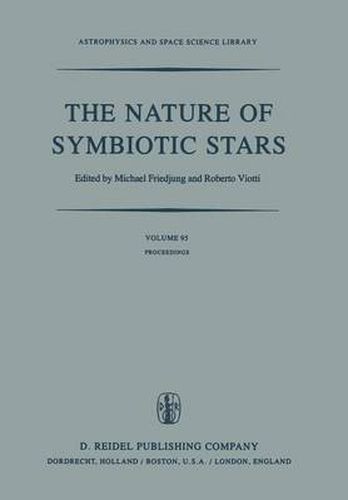Readings Newsletter
Become a Readings Member to make your shopping experience even easier.
Sign in or sign up for free!
You’re not far away from qualifying for FREE standard shipping within Australia
You’ve qualified for FREE standard shipping within Australia
The cart is loading…






This title is printed to order. This book may have been self-published. If so, we cannot guarantee the quality of the content. In the main most books will have gone through the editing process however some may not. We therefore suggest that you be aware of this before ordering this book. If in doubt check either the author or publisher’s details as we are unable to accept any returns unless they are faulty. Please contact us if you have any questions.
Many aspects of symbiotic stars have long puzzled astronomers. For instance while most students of the subject have considered them binary, many have at different times supported single star models. The nature of their outbursts is uncertain, while the dividing line between symbiotic stars and novae is unclear. In any case doubts can even be raised as to whether a class of Symbiotic Stars really exists. Much new data has been obtained in recent years, in particular from the study of radiation outside the visual region. Many symbiotic stars have been studied in the UV with IUE since 1978, while X-rays were det ected in a few cases with the Einstein satellite. There have been a num ber of infrared and radio studies, and the number of known symbiotic stars has also considerably increased. Furthermore theoretical ideas have in recent years been considerably enriched by concepts of stellar winds, and accretion phenomena in binaries including accretion disks. It was there fore extremely opportune and timely to hold the first international meet ing exclusively devoted to these stars, so as to consider the new results from such a wide range of observations in different spectral regions, and the conclusions which can be drawn for possible models as well as theories of the nature and structure of symbiotic stars. After a session devoted to new observations in different spectral regions, a session was spent considering some individual stars.
$9.00 standard shipping within Australia
FREE standard shipping within Australia for orders over $100.00
Express & International shipping calculated at checkout
This title is printed to order. This book may have been self-published. If so, we cannot guarantee the quality of the content. In the main most books will have gone through the editing process however some may not. We therefore suggest that you be aware of this before ordering this book. If in doubt check either the author or publisher’s details as we are unable to accept any returns unless they are faulty. Please contact us if you have any questions.
Many aspects of symbiotic stars have long puzzled astronomers. For instance while most students of the subject have considered them binary, many have at different times supported single star models. The nature of their outbursts is uncertain, while the dividing line between symbiotic stars and novae is unclear. In any case doubts can even be raised as to whether a class of Symbiotic Stars really exists. Much new data has been obtained in recent years, in particular from the study of radiation outside the visual region. Many symbiotic stars have been studied in the UV with IUE since 1978, while X-rays were det ected in a few cases with the Einstein satellite. There have been a num ber of infrared and radio studies, and the number of known symbiotic stars has also considerably increased. Furthermore theoretical ideas have in recent years been considerably enriched by concepts of stellar winds, and accretion phenomena in binaries including accretion disks. It was there fore extremely opportune and timely to hold the first international meet ing exclusively devoted to these stars, so as to consider the new results from such a wide range of observations in different spectral regions, and the conclusions which can be drawn for possible models as well as theories of the nature and structure of symbiotic stars. After a session devoted to new observations in different spectral regions, a session was spent considering some individual stars.